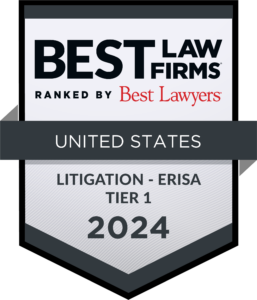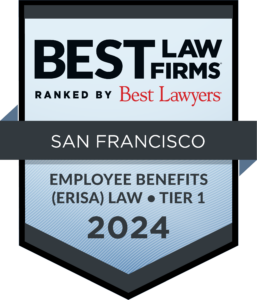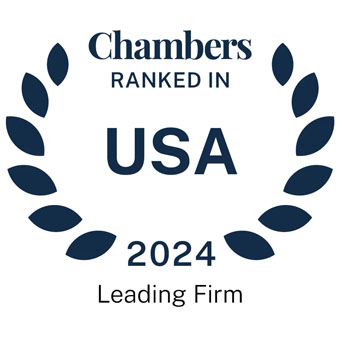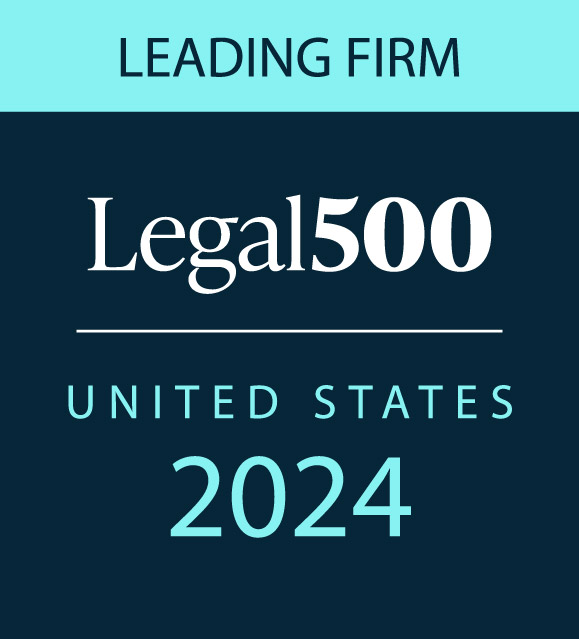On January 15, 2025, the Employee Benefits Security Administration (EBSA) published a final rule updating its Voluntary Fiduciary Correction (VFC) Program (the “Updated VFC Program”), based on proposed rules issued in November of 2022. The Updated VFC Program will take effect on March 17, 2025.
The most significant changes to the VFC under the Updated VFC Program are the addition of two new self-correction features for common plan failures:
- late remittance of elective deferral contributions and participant loan repayments (collectively, “Late Participant Contributions”), and
- “eligible inadvertent participant loan failures” eligible for self-correction under the Internal Revenue Service’s Employee Plans Compliance Resolution System (EPCRS).
Other changes under the revised program include (i) alternative corrections for prohibited transactions involving certain plan loans made at below-market interest rates, (ii) corrections for purchase and sale transactions involving the plan and parties in interest, and certain clarifying changes. This article focuses on the new self-correction opportunities.
VFC Application Process.
Under the prior version of VFC (effective through March 16, 2025), plan fiduciaries were permitted to correct certain fiduciary breach violations and prohibited transactions under the Employee Retirement Income Security Act (ERISA) by applying to EBSA for relief (the “Application Process”). VFC specifies nineteen categories of transactions that are eligible for correction. Plan sponsors may submit proposed corrections for these transactions to EBSA and, if the plan sponsor’s correction is approved, EBSA will issue a “no-action” letter to the employer. The no-action letter states that EBSA will not take any civil enforcement action, including legal action and assessment of civil penalties, against the plan sponsor with respect to the corrected transaction.
Under the Updated VFC Program, the nineteen transactions remain, but a new self-correction component (SCC) (under which an application is not required) streamlines the process for two transactions. Under SCC, the submitter simply files a notice on the EBSA website, which is acknowledged by EBSA. (The requirements of the notice are explained in detail, below.) A no- action letter is not issued in this instance, however, the submitter receives the same benefits it would have received if EBSA has issued a no-action letter.
Self-Correction of Late Participant Contributions.
According to EBSA’s overview of the changes to VFC, late deposit of participant elective deferral contributions and loan repayments are the most frequently corrected VFC transaction. SCC is intended to streamline the process for correcting this defect, which will make it easier and less expensive to use. This should have the effect of encouraging greater compliance in this regard.
Eligibility. SCC is available to plans of any size, provided the plan, plan sponsor, or other plan officials are not “under investigation” as defined under VFC. One is generally under investigation if it is being investigated by EBSA; under investigation or examination by another federal, state or local agency, or is under a PBGC or IRS Employee Plans Division examination. Additionally, the following conditions must be satisfied:
- $1,000 Cap on Lost Earnings. The total amount of the lost earnings on the Late Participant Contributions must be $1,000 or less. Lost earnings on the Late Participant Contributions must be calculated using the Department of Labor’s online calculator.
- 180-Day Remittance Deadline. The Late Participant Contributions must be remitted to the plan within 180 calendar days from the date the elective deferrals were withheld or the loan repayments were received by the employer. According to EBSA, this time frame was selected because any failure to remit participant contributions that exceeds 180 days indicates a potentially serious problem with plan administrative procedures for handling participant contributions. Exceeding this time frame, as noted by EBSA in the Preamble to the 2022 proposed changes to VFC, suggests the need for EBSA to actively evaluate the circumstances of the late remittance through the Application Process.
Self-Correction Procedures for Late Participant Contributions. As is the case with the Application Process, SCC requires the payment of the Late Participant Contributions to the plan (principal amounts), plus a contribution to the plan for lost earnings (i.e., the approximate amount that would have been earned by the plan on the Late Participant Contributions if they had been contributed timely). In addition, SCC requires (i) calculation of lost earnings using a standardized “loss date,” (ii) the online filing of a SCC notice, (iii) completion of a “Record Retention Checklist,” and (iv) execution of a Penalty of Perjury Statement. Each of these procedures is described in more detail below:
- Determination of Lost Earnings. Under the Application Process, lost earnings are determined beginning as of the “loss date,” which is the earliest date on which the participant’s elective deferral contribution or loan repayment reasonably could have been segregated from the employer’s general assets. Under the safe harbor rule for plans with fewer than one hundred participants, participant contributions are deemed timely deposited if they are remitted within seven business days from the date the elective deferral could have been withheld from a participant’s pay, or receipt of the loan repayment from the participant by the employer. Under SCC procedures, lost earnings must be paid from the “date of withholding or receipt” and must be calculated using the online calculator to determine the amount of lost earnings payable to the plan. Manual calculation is not an option, as otherwise permitted under the Application Process.
- Notice Requirement. Instead of a no-action letter, self-correctors receive an acknowledgement from EBSA (“Acknowledgment”) via email, once they have electronically filed a notice that includes the following information:
- Name and email address for the self-corrector.
- The plan name
- The plan sponsor’s EIN
- The three-digit plan number
- The principal amounts
- The amount of lost earnings and date paid to the plan
- The loss date (which is the date of withholding or receipt)
- The number of participants affected by the correction.
- Retention Record Checklist. The plan sponsor must complete the Retention Record Checklist and assemble associated documents referenced on the checklist. The checklist and documents must be retained by the plan administrator, along with the penalty of perjury statement.
- Penalty of Perjury Statement. The plan fiduciary (with knowledge of the prohibited transaction to be self-corrected), any authorized representative (e.g., an attorney or CPA), and any other plan official seeking relief under the SCC must execute a penalty of perjury statement. In addition to attesting that the plan and the plan sponsor are not under investigation, the penalty of perjury statement certifies that the filers have reviewed the self-correction notice summary, the Acknowledgement and the retention record checklist (including the associated documentation).
It should be noted that:
- EBSA reserves the right to conduct an investigation to confirm the accuracy of the factual statements made in the self-correction notice, and to ensure that corrective actions were actually taken.
- The plan administrator must retain proof of payment of the principal amounts and lost earnings and copies of (i) the filed SCC notice, (ii) the Acknowledgement, (iii) the representative’s authorization form (if applicable), and (iv) the signed penalty of perjury statement.
- The reporting of Late Participant Contributions on the plan’s Form 5500 or Form 5500-SF is still required, regardless of whether a transaction is corrected by submitting under the Application Process or by filing under SCC. The information provided in the notice submitted to EBSA allows it to cross-reference self-correctors to their Form 5500/5500-SF reports.
Even though those who choose to self-correct under SCC do not receive a no-action letter, self-correction allows plan sponsors to avoid the imposition of civil monetary penalties and EBSA civil enforcement action. There is currently no limit on how often a plan sponsor may submit transactions under SCC; however, EBSA has stated that it will monitor the usage of the program. However, EBSA says in the preamble to the new VFC rule that whether frequent filers will trigger communications from EBSA or initiate an investigation is dependent on the facts and circumstances of the particular case.
Self-Correction of Certain Participant Loan Failures under EPCRS
In the past, to use the VFC for correction of participant loan failures the loan had to be first corrected under the IRS’ Voluntary Correction Program (the “VCP,” a component program under EPCRS). However, in 2019 the IRS allowed certain participant loan failures to be self-corrected under EPCRS without filing an application under VCP. Additionally, the IRS was directed under SECURE 2.0 (signed into law on December 29, 2022) to update EPCRS within two years to permit self-correction of “eligible inadvertent failures” (defined below), including participant loan failures attributable to such failures. The IRS has not yet updated EPCRS in this regard. However, interim IRS guidance in Notice 2023-43 now permits participant loan failures to be self-corrected if they qualify as “eligible inadvertent failures.
Under SECURE 2.0 and Notice 2023-43, an eligible inadvertent failure is a failure that occurs despite the existence of established practices and procedures designed to keep the plan in compliance with qualification requirements. It does not include any egregious failures or those relating to the diversion or misuse of plan assets, or failures that are directly or indirectly related to an abusive tax avoidance transaction.
Under the Updated VFC Program, SCC is now available for participant loans that have been self-corrected under EPCRS, as modified by Notice 2023-43. SCC can also be used to correct participant loan failures that do not comply with the maximum loan amount limitation, level amortization or the maximum repayment period. Additionally, SCC is available to correct loans that have been defaulted due to a failure to withhold repayments from a participant’s wages, loans made in the absence of required spousal consent, and loans exceeding the number of loans allowed under plan terms, provided the loan has been corrected under EPCRS.
The self-correction procedures for participant loans are similar to those for the self-correction of Late Participant Contributions described above, except that completion of a checklist is not required. Note that SCC is available even if the plan or the self-corrector is under investigation, so long as the self-corrector is eligible under EPCRS to correct the participant loan failure as an eligible inadvertent failure. IRS Notice 2023-43 permits a participant loan failure to be self-corrected as an eligible inadvertent failure even if the employer or plan is under examination by the IRS, provided the sponsor had demonstrated a specific commitment to implement self-correction before the examination, or during the examination, if the loan failure is considered insignificant under the factors set forth in EPCRS. But for the exception, being under examination by the IRS would disqualify the failure from VFC as being under investigation.
Prohibited Transaction Exemption 2002-51.
In connection with the Updated VFC Program, EBSA has amended Prohibited Transaction Exemption 2002-51 (the “PTE”) to expand excise tax relief to certain transactions corrected under SCC. While the summary of the PTE states it is being amended to provide excise tax relief for transactions that are corrected under SCC, in reality the PTE only covers Late Participant Contributions corrected under the SCC.
To take advantage of the excise tax relief, under the PTE, self-correctors must first go through SCC and receive the Acknowledgement. EBSA eliminated the requirement to provide notice to interested parties for eligible self-correctors who wish to take advantage of the PTE. However, in lieu of providing that notice, the self-corrector must pay to the plan any excise tax due under Code section 4975. The self-corrector must complete and retain an IRS Form 5330 reflecting the calculation of the excise tax and proof of payment to the plan. This information must be provided to the ERISA plan administrator. The payment must be allocated among all the plan participants and beneficiaries in the same manner as provided under the plan with respect to plan earnings. (It is not entirely clear how this allocation is to be made for plans that do not maintain pooled assets, such as a defined contribution plan with participant self-direction of the investment of their account.) EBSA has also removed the restriction that excise tax relief is available only to applicants who had not taken advantage of the relief for a similar type of transaction within the last three years.
Conclusion
The Updated VFC Program, which provides for the ability to self-correct late remittances of elective deferrals and participant loan repayments, and inadvertent participant loan failures, streamlines VFC and thereby facilitates correction for these transactions. While there are still significant data and document retention requirements, they are not overly burdensome when compared to the value of the compliance relief, which now can be obtained without the significant costs associated with filing formal VFC and/or IRS applications.
The revisions to VFC highlight the need for plan fiduciaries and their advisors to maintain practices and procedures reasonably designed to facilitate compliance with ERISA, through early identification and prompt correction of compliance defects. (Note that the maintenance of such practices and procedures is already an eligibility condition for use of self-correction under the IRS’ Self Correction Program.) This, in turn, will facilitate the ability to take advantage of SCC under the Updated VFC Program.
We are hopeful that if SCC is successful, and we think it will be, this might prompt the DOL to expand self-correction to other VFC transactions. If you have questions regarding the Updated VFC Program, please contact us.



